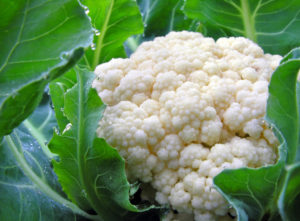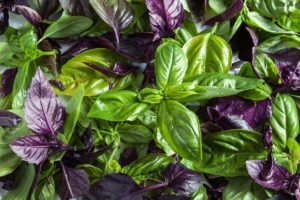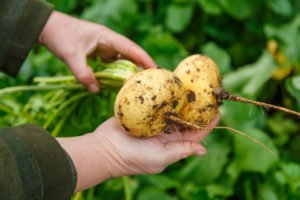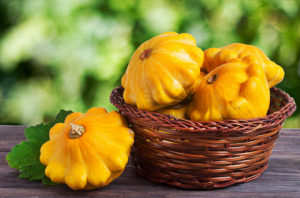
I personally met phaseolus as a child. Honestly, I didn’t like her at first. But then, apparently, entered taste of. Now we do everything with phaseolus: cook soups with it, preserve salads, simply boil and fry with onions. We like it. If you have never planted beans and would like to learn more about this plant, I will be happy to share with you useful information. The benefit of the experience of growing beans available.
Beans – a plant of the legume family, which gives fruit in the form of pods with beans. Beans can be curly, and can grow in the form of a shrub. The color, size and shape of the seeds depends on the specific variety.
Planting beans
The first thing to think about-a place to land. Beans do not like clay soils, where water seeps badly. Excessive humidity is harmful to it. The plant likes fertile and light soils. In addition, think in advance what area you have not fertilized for a long time, because beans — saturates the soil with nitrogen. After it all well is growing.
The second stage is seed preparation. It is necessary to weed out the spoiled beans. Then you can soak the beans overnight so that they germinate faster, hitting the soil. It is also recommended about 5 minutes before planting to lower them in a solution of boric acid — this will protect the seedlings from pests.

When the seeds are prepared and the place is chosen, prepare a bed. Curly beans can simply be planted, for example, along the fence. The soil is watered from a watering can and stick the beans in rows to a depth of 5 cm the distance between plants should be at least 15 cm.
If the temperature has not yet settled, cover the bed at night to protect from frost. It is not recommended to plant beans at temperatures below +10…+15 degrees Celsius.
Care of beans
To make beans ugly, you need to take care of it properly. Care is loosening the soil, weeding, fertilizing, watering, pest control.
Soil loosening
The soil must be loosened from the appearance of seedlings. Do this carefully, so as not to damage the root system and not accidentally pull out the beans itself. Further loosening between rows can be combined with weeding.

Loosening of the soil is especially important if it tends to dry out and poorly pass water. Let me remind you that beans do not like waterlogging. If the water does not seep, the harvest will not be the best. Why weeding is needed, you no doubt know yourself.
Additional fertilizing
After 3-4 weeks after emergence, the first feeding is carried out. Usually use a full range of fertilizers, but most of all at this stage the plant needs nitrogen. Ideally, it should receive atmospheric nitrogen, but in dry weather, the plant can acutely feel its shortage. For example, some use fermented bird droppings to fertilize beans.

After about 3 weeks you can spend the second fertilizer for fruit formation. This time, the most important for the plant are phosphorus, magnesium and potassium (all contained in ordinary ash).
That’s what grew up with us (note between the first and second photo was 21 days):

Irrigation
Beans require a lot of water, especially at the stage of formation of pods. Therefore, it is necessary to ensure that the soil is moderately moist. It is difficult to specify the exact rate of irrigation — it depends on the weather and soil. The best water for irrigation — rain. And the benefit of thunderstorms is difficult to overestimate. The plant is very much adds to the growth after a thunderstorm.
Pest control
Most often, beans are affected by slugs. As measures to prevent pests, it is necessary to remove weeds in a timely manner, monitor moderate soil moisture. If slugs have already been bred, a fairly effective measure is their removal. They like to gather on stones and other objects. Heard even that some gardeners specially leave any economic tool that slugs got on them, and it was easier to collect them.

Against fungal diseases and viruses good help copper-containing drugs.
Harvest
It all depends on the variety of beans and the needs for which you want to use it. Asparagus beans should not be kept until dry, otherwise its value will be lost. Green beans is beans, which are used entirely in green! That is, pods with seeds, not only seeds, are subject to preparation. Inside it is not only the seeds, but also the flesh that fills the cavity.

For conservation, beans need to be harvested earlier than usual. If you want to stock up on beans for the winter, wait until the pods turn yellow and begin to open. The main thing is not to miss this moment, otherwise you will have to collect beans from the ground. But it is best to remove the bean pods when they are Mature, but still slightly green. To determine the maturity, you need to break the pod in half. The edges should not be fibers, the fault should be smooth.




Leave a Reply